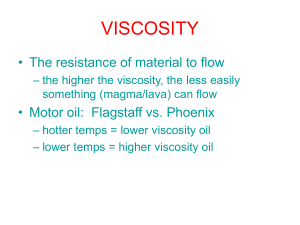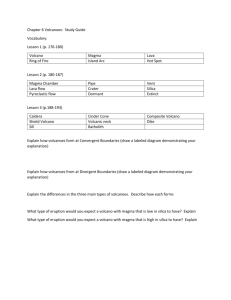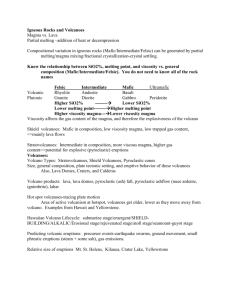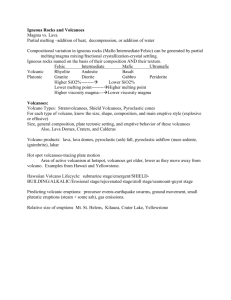Volcanoes Study Guide Answers
advertisement
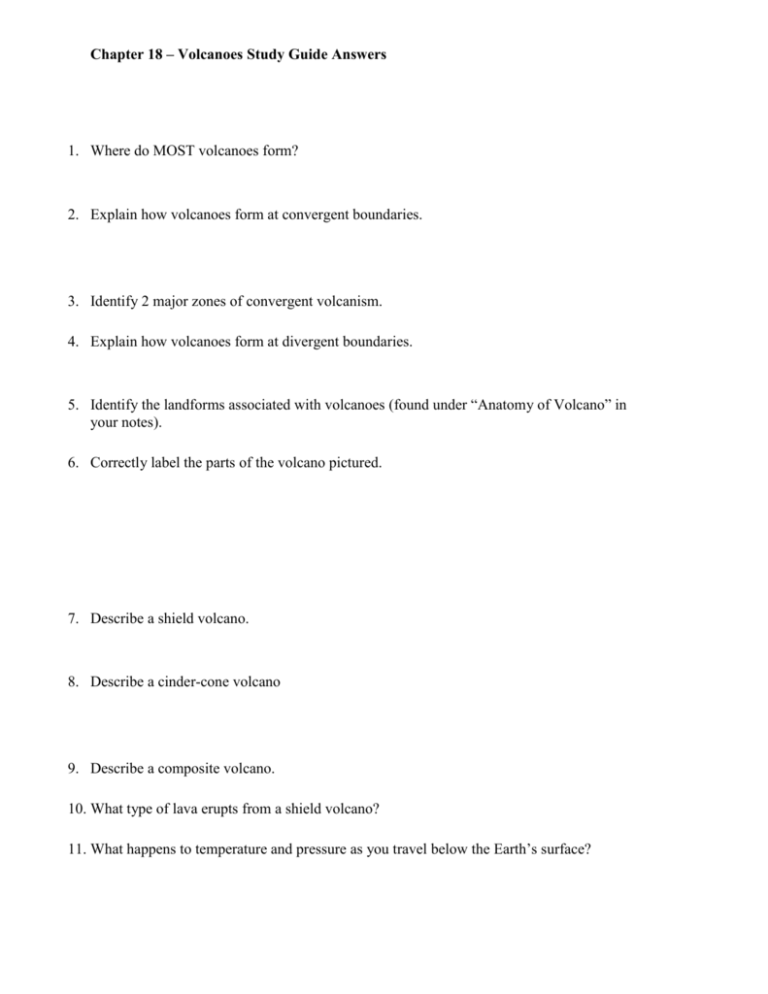
Chapter 18 – Volcanoes Study Guide Answers 1. Where do MOST volcanoes form? Most form at plate boundaries (convergent & divergent), some form over hot spots 2. Explain how volcanoes form at convergent boundaries. Oceanic plate descends below another plate at a subduction zone, magma moves upward combining with rock and minerals to create a volcano 3. Identify 2 major zones of convergent volcanism. Circum-pacific belt, Mediterranean belt 4. Explain how volcanoes form at divergent boundaries. 2 plates move apart and magma rises to form new ocean floor, forms nonexplosive volcanoes 5. Identify the landforms associated with volcanoes (found under “Anatomy of Volcano” in your notes). Vents, craters, calderas 6. Correctly label the parts of the volcano pictured. A – Conduit B – Magma chamber C – Ash cloud D – Vent or crater E – tephra F – Pyroclastic flow 7. Describe a shield volcano. Broad, long, gentle slopes Basaltic lava 8. Describe a cinder-cone volcano Steep sides, generally the smallest Forms as tephra ejected high into the air fall back to Earth and pile around a vent 9. Describe a composite volcano. Made of layers of tephra and lava 10. What type of lava erupts from a shield volcano? Basaltic 11. What happens to temperature and pressure as you travel below the Earth’s surface? Increase Temperature because closer to the hot molten core Pressure because of weight of overlying rocks 12. How does the amount of dissolved gasses influence volcanic explosions? Violent eruptions come from very viscous lava that prevents gases from escaping, pressure builds up until volcano explodes and gases escape 13. How is viscosity related to speed of lava? Low viscosity = faster High viscosity = slower 14. Identify where basaltic magma forms and its viscosity. Upper mantle, low viscosity, free flowing, quiet eruptions 15. Identify where andesitic magma forms and its viscosity. Oceanic crust and sediments, medium/intermediate viscosity 16. Identify where rhyolitic magma forms and its viscosity. Continental Crust, High viscosity, Explosive because very viscous and contains large volumes of trapped gases 17. Define tephra. Ejected materials from volcanoes classified by size 18. Name the largest fragment of tephra. Name the smallest fragment of tephra. Blocks, ash 19. Define pluton. Give examples. Intrusive igneous rock body formed from magma Batholiths, stocks, sills, dikes, laccoliths
